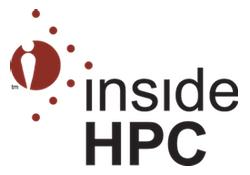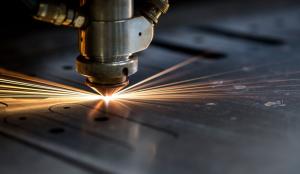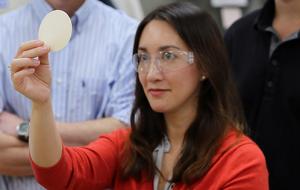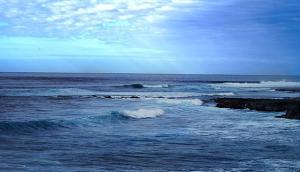LAB REPORT
Science and Technology Making Headlines
Sept. 2, 2016


Diablo Magazine featured three Laboratory researchers in their 2016 “Forty Under Forty” issue. From left: Computing Applications division leader Lisa Belk, research engineer Monica Moya and physicist Tammy Ma.
They’re not even 40 yet
Three Lawrence Livermore researchers are not even 40 yet but have achieved so much.
They are featured in Diablo Magazine’s 2016 "Forty Under Forty" issue. The annual list recognizes young professionals in the East Bay who are leading the charge in their fields.
Experimental physicist Tammy Ma was No. 3 on the list for her work developing and executing experiments aimed at creating sustained fusion at the National Ignition Facility (NIF). NIF Computing Applications Division Leader Lisa Belk, No. 15 on Diablo's list, heads a team of more than 80 people providing computation support to national security, discovery science and energy security missions at NIF. Research engineer Monica Moya, No. 37, is the principal investigator for a project that uses 3D printing to create tubes made from human cells and biomaterial that guide small blood vessel development.


3D printing is just one of the areas of expertise that LLNL can provide to industry.
Clean energy industries get a green light
The Department of Energy has funded $3.8 million for 13 new industry projects as part of its HPC4Mfg program.
The High Performance Computing for Manufacturing (HPC4Mfg) Program creates an ecosystem that allows experts at DOE’s national laboratories to work directly with manufacturing industry members to teach them to adopt or advance their use of high performance computing to address manufacturing challenges with a goal of increasing energy efficiency, reducing environmental impacts and advancing clean energy technologies.
The partnerships use world-class supercomputers and scientific expertise from Lawrence Livermore National Laboratory, which leads the program, and partner laboratories Lawrence Berkeley and Oak Ridge national laboratories, which in turn team up with U.S. manufacturers.


RAND Corporation and Lawrence Livermore National Laboratory researchers have partnered to combine high-performance computing with public policy analysis to improve planning for complex issues, such as water resource management for the Colorado River Basin.
Crunching water data
Lawrence Livermore National Laboratory is tapping its supercomputing power to speed the data analysis needed to manage the allocation of Colorado River water to millions of stakeholders. The Lab's researchers have teamed with nonprofit research organization Rand Corp. to use the lab's High Performance Computing Innovation Center to perform water allocation tasks in minutes instead of weeks.
Managing the flow of the river, which winds almost 1,500 miles through seven states and some of the most arid land in the country, has been a big job for the past century. Like many other U.S. waterways, the Colorado River is under increasing pressure from a growing throng of consumers. Lab officials said the river provides water for 30 million people.


LLNL researchers have successfully demonstrated the 3D printing of shape-shifting structures that can fold or unfold to reshape themselves when exposed to heat or electricity. Researchers Jennifer Rodriguez and Jim Lewicki examine a stent that can expand when exposed to heat. Photo by Julie Russell/LLNL.
Taking origami to the next level
Lawrence Livermore scientists have been behind many projects lately in the field of 3D printing. But they are now moving beyond that into 4D printing.
4D represents an evolution that is just beginning. The best way to describe it is 3D printing that has come to life. Representing innovation that allows for products to be intuitive and morph with their changing environments, 4D printing is an expanding realm already.
LLNL is exploring how 4D structures, also referred to as smart materials, will change shape during temperature variations. They have been working with a theme not unlike origami, in making a variety of boxes, spirals, spheres and more from shape memory polymers (SMPs). The scientists say 4D printing and its world of morphing shapes within may have a major impact in the future for applications in aerospace, medical and electronics to include areas such as robotics.

Ryder Bay near Rothera Research Station, Adelaide Island, Antarctica. LLNL researchers have discovered how methylmercury enters the Antarctic sea ice and accumulates in the marine food web.
Danger in the ocean
A new study has confirmed that the Antarctic Sea Ice is housing a certain type of bacteria capable of converting Mercury to its more toxic form, which could in turn contaminate the marine environment, including fish and birds.
Researchers from Lawrence Livermore National Laboratory (LLNL) assisted a team from the University of Melbourne in discovering how methylmercury enters the Antarctic sea and bioaccumulates in the marine food web.
LLNL scientists Michael Thelen and Adam Zemla performed protein sequence analysis and structural modeling to predict key proteins involved in mercury methylation.
Mercury (Hg) created from volcanoes and human activity such as burning fossil fuels circulates in the atmosphere then deposits onto sea ice. The marine nitrite-oxidizing bacterium Nitrospina may convert Hg to methylmercury (MeHg), which is released into the Southern Ocean, where it enters the marine food web. Scientists are concerned that MeHg stored in the fatty tissues of fish would contain more mercury than humans can handle and could be a public health concern in the future.





